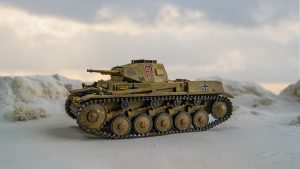What Are the Advantages of Using a CO2 Laser 3D Printer for Prototyping?
Introduction to CO2 Laser 3D Printing
The world of prototyping has taken a leap forward thanks to advances in 3D printing technology. Among the various options available, CO2 laser 3D printers stand out for their unique capabilities and impressive results. Whether you’re an engineer, designer, or hobbyist, understanding how these machines work can open up a realm of possibilities for bringing your ideas to life. Imagine being able to create precise models quickly and efficiently—sounds enticing, right? Let’s dive into what makes CO2 laser 3D printers not just a tool but an essential asset in the prototyping process.
How Does a CO2 Laser 3D Printer Work?
A CO2 laser 3D printer operates using a focused beam of light produced by a CO2 gas laser. This high-powered beam can cut, engrave, or mark various materials with precision.
The process begins when the printer receives a digital design file. The machine then translates this information into movements that guide the laser head across the material’s surface.
As the laser moves, it generates intense heat, which vaporizes or melts the material in its path. This allows for intricate shapes and detailed designs to emerge from sheets of plastic, wood, acrylic, and even certain metals.
Cooling systems often accompany these printers to manage temperature during operation. This ensures consistent performance and prevents overheating.
Each layer is meticulously created until your prototype takes form. With each pass of the laser, accuracy remains paramount—making CO2 lasers ideal for rapid prototyping tasks.
Advantages of Using a CO2 Laser 3D Printer for Prototyping
The advantages of using a CO2 laser 3D printer for prototyping are numerous. First and foremost, these machines deliver exceptional precision. Their ability to cut and engrave with fine detail makes them perfect for intricate designs.
Cost-effectiveness is another major benefit. With lower material waste compared to traditional methods, businesses can save significantly on resources while still achieving high-quality results.
Versatility in materials sets CO2 laser printers apart as well. They work seamlessly with various substrates like wood, acrylic, and plastic, enabling designers to explore creative possibilities without limitations.
Speed is essential in the fast-paced world of prototyping. CO2 lasers operate quickly, allowing teams to iterate faster than ever before—getting ideas from concept to tangible prototype in record time.
These factors combine to create an efficient workflow that empowers innovators across industries.
A. Cost-Effective
One of the standout benefits of using a CO2 laser 3D printer is its cost-effectiveness. From initial setup to ongoing operational expenses, it often proves to be more budget-friendly than other manufacturing methods.
The materials used in CO2 laser printing are generally affordable and widely available. You can work with various substrates like acrylic, wood, and even some metals without breaking the bank.
Moreover, these printers require less maintenance compared to traditional CNC machines or industrial-grade equipment. co2 laser 3d printer This translates into lower long-term costs for businesses looking to prototype regularly.
Time savings further enhance their affordability. Rapid prototyping means reduced labor costs and quicker turnaround times on projects, allowing companies to innovate faster while minimizing overhead expenses.
B. High Precision and Accuracy
One of the standout features of a CO2 laser 3D printer is its exceptional precision and accuracy. This technology utilizes focused laser beams to cut or engrave materials with remarkable detail.
When crafting prototypes, even the slightest miscalculation can lead to costly errors. With a CO2 laser printer, you can trust that your designs will be executed exactly as intended. The ability to achieve such fine tolerances makes it an ideal choice for intricate models.
This high level of accuracy extends beyond mere aesthetics; it also enhances functionality. Parts designed with precision fit together seamlessly, ensuring optimal performance in real-world applications.
Whether you’re working on complex geometries or delicate patterns, CO2 laser printers deliver consistent results every time, giving designers peace of mind throughout the prototyping process.
C. Versatile Material Compatibility
One of the standout features of a CO2 laser 3D printer is its remarkable versatility in material compatibility. This technology can effectively work with various materials, including co2 laser 3d printer wholesale plastics, wood, glass, and even certain metals.
Such adaptability opens up endless possibilities for prototyping projects across different industries. Designers and engineers can experiment with multiple mediums without switching devices or settings constantly.
The ability to handle diverse materials also means you can achieve unique finishes and textures tailored to specific requirements. Whether you’re looking for something lightweight or heavy-duty, a CO2 laser 3D printer delivers consistently high-quality results.
This flexibility not only enhances creativity but also reduces the time needed for testing prototypes made from different substances. Embracing this level of compatibility paves the way for innovation in product development and design processes.
D. Fast Printing Speeds
When it comes to prototyping, time is of the essence. A CO2 laser 3D printer excels in this area by delivering impressive printing speeds. Unlike traditional methods that often drag on for hours or even days, these machines can produce intricate designs in a fraction of the time.
The speed of a CO2 laser 3D printer is attributed to its efficient cutting and engraving capabilities. By using focused beams of light, they can quickly slice through materials without compromising detail. This allows designers and engineers to iterate faster.
Rapid prototyping not only accelerates product development but also provides quicker feedback loops. Teams can evaluate their concepts sooner and make necessary adjustments with ease. With less downtime waiting for prints, project timelines shrink significantly, making your workflow more productive than ever before.
Real-Life Examples of Successful Prototyping with CO2 Laser 3D Printers
Many companies have leveraged CO2 laser 3D printers to streamline their prototyping processes. For instance, a startup in the consumer electronics sector used this technology to create intricate housings for their devices. The precision of the printer allowed them to fine-tune dimensions quickly, leading to faster iterations.
In another case, an architectural firm employed CO2 lasers for model making. They produced detailed architectural models that showcased both aesthetics and functionality. This helped clients visualize projects effectively before construction began.
Even artists are getting in on the action. A designer transformed digital artwork into physical sculptures using a CO2 laser printer, showcasing its capability in creative fields as well.
These examples illustrate how diverse industries can benefit from the accuracy and efficiency provided by CO2 laser 3D printers during prototyping phases. Each success story highlights innovative applications that push boundaries further than traditional methods ever could.
Factors to Consider When Choosing a
When selecting a CO2 laser 3D printer for prototyping, several factors come into play. First, consider the size of the build area. Depending on your projects, you may need a larger or smaller workspace to fit your design needs.
Next is the resolution and accuracy of the printer. A higher resolution will yield finer details in your prototypes, which can be crucial for specific applications. Additionally, take note of the speed at which different models operate; faster printing could significantly reduce production time without sacrificing quality.
Material compatibility should also influence your choice. Some printers excel with particular materials while struggling with others, so ensure that yours can handle the range you intend to use.
Don’t overlook customer support and warranty options provided by manufacturers. Reliable assistance can make all the difference when troubleshooting or maintaining equipment over time.
Choosing wisely based on these considerations will help maximize the benefits of using a CO2 laser 3D printer in your prototyping endeavors.

